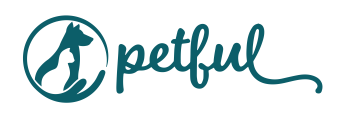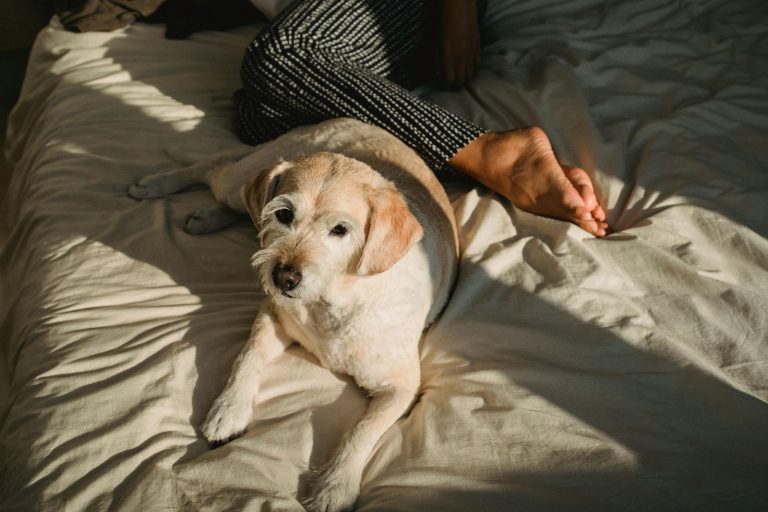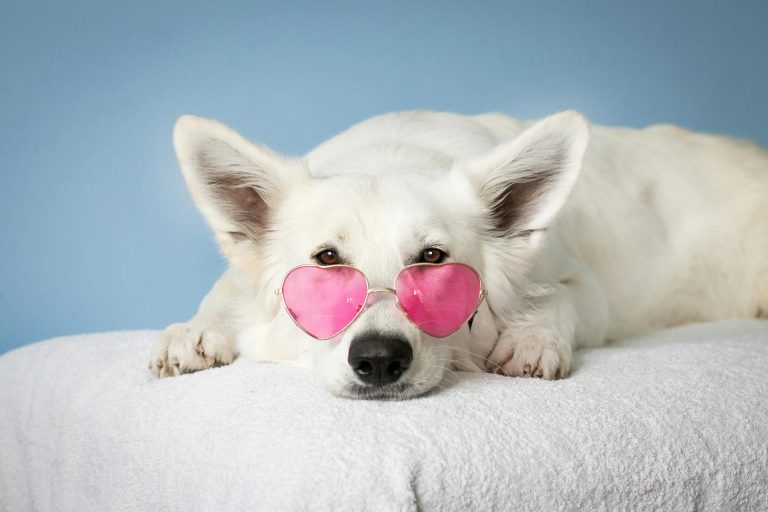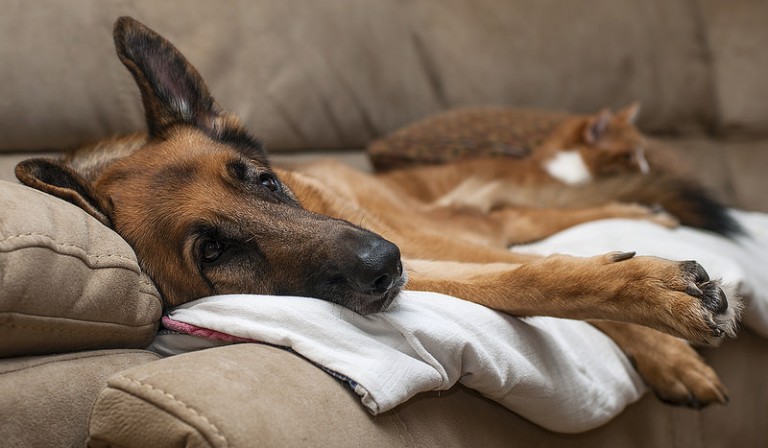Bulldog Breed Profile: Essential Facts
Bulldogs are short, medium-sized dogs with extra skin folds and a lot of affection to share.
Bulldog

Don’t leave your pet’s safety to chance
Sign up for Petful recall alerts today.

Key Characteristics of Bulldogs
Bulldogs, commonly referred to as English Bulldogs, are medium-sized and compact, making them one of the most popular breeds according to the American Kennel Club.
- Body Structure: Bulldogs have short legs and a large head with distinctive extra skin folds. Their noses and ears are dark, with small, thin ear shapes.
- Distinctive Features: Bulldogs are known for their underbite, and their tails can either be straight or curled.
- Coat Colors: The Bulldog’s short, flat coat is low-maintenance and comes in various colors, including brindle, white, red, fallow, fawn, and piebald.
For more information on the breed’s origin and additional characteristics, you can read more on Wikipedia’s page on English Bulldogs.
Origins of the Bulldog
The Bulldog’s name reflects its original purpose: bull-baiting. Historically, Bulldogs would approach bulls from below, aiming to bite the neck, effectively stopping the bull from fighting back. These early Bulldogs were:
- Extremely Resilient: Known for their high pain tolerance.
- Courageous: Bulldogs displayed a fierce temperament and unbreakable spirit.
When bull-baiting was outlawed in England in 1835, the breed’s role shifted. To prevent Bulldogs from disappearing, breeders focused on tempering their ferocity, leading to the affectionate and loyal disposition seen in Bulldogs today.
- Modern Companion: By 1886, the American Kennel Club recognized the Bulldog as an official breed, and the Bulldog Club of America was established shortly thereafter, in 1890. Bulldogs are now beloved family pets and participate in conformation shows.
This historical shift transformed the Bulldog into the gentle, intelligent, and determined companion we know today.
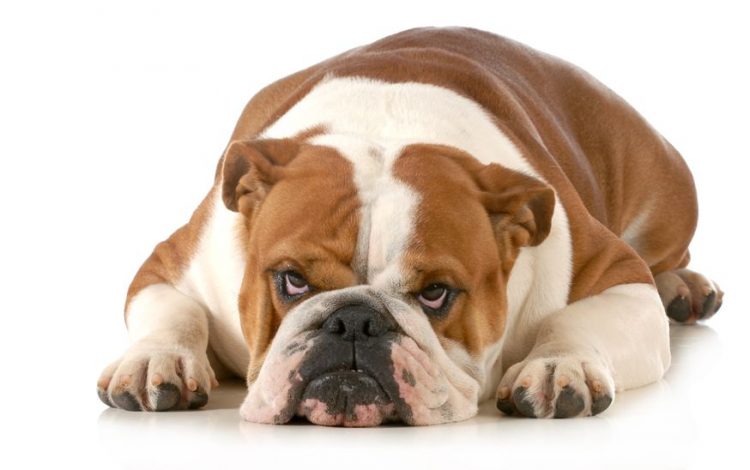
Bulldog Temperament and Friendliness
Today, Bulldogs are widely described as loving and gentle companions.
- Affectionate Nature: Bulldogs thrive on human attention and often form strong bonds with children.
- Training Needs: Bulldogs can be stubborn and occasionally dominant, making consistent training essential for a well-behaved companion.
- Protective Instincts: Bulldogs may show protective behaviors, sometimes displaying aggression when guarding people or possessions. Early training helps manage these tendencies effectively.
- Compatibility with Other Pets: Bulldogs generally get along well with other household pets but may be cautious around unfamiliar dogs.
With proper guidance, Bulldogs become affectionate and reliable family pets.
Are the Bulldogs the Right Dog for You?
Exercise Needs of the Bulldogs
LowLOW: Bulldogs have relatively low exercise requirements, especially as they mature and become more relaxed.
- Energy Levels: While Bulldogs are energetic in their younger years, they tend to calm down with age.
- Apartment-Friendly: Bulldogs are well-suited to apartment living due to their low indoor activity level and minimal space needs.
- Daily Walks: Despite their low energy, daily walks are essential for Bulldogs to expend energy, fulfill exercise requirements, and address instinctive behaviors.
- Socialization: It’s important to socialize your Bulldog properly before introducing them to unfamiliar animals or people.
This balanced approach to exercise ensures Bulldogs stay healthy without requiring excessive activity.
Grooming Needs for Bulldogs
MediumMEDIUM: Bulldogs require moderate grooming to keep them healthy and comfortable.
- Coat Care: Bulldogs have a short coat that’s easy to maintain. Weekly brushing and baths as needed help keep their coat in good condition.
- Skin Folds: Due to their skin folds, daily cleaning is necessary to remove dirt and prevent infections.
- Other Essentials: Routine care includes regular ear, nail, and dental maintenance.
- Messy Eaters: Bulldogs tend to be messy eaters, so it’s helpful to check and clean their face and skin folds after meals.
- Drooling: Bulldogs are known for snoring and extreme drooling; keeping a rag handy can help manage this.
With these grooming steps, Bulldogs stay clean and comfortable while avoiding common skin and health issues.
Health Problems for Bulldogs
HighHIGH: The structure of a Bulldog’s face can cause breathing problems, and for this reason the Bulldog is known as a brachycephalic dog breed. Temperature extremes can aggravate breathing difficulties, and some airlines may refuse to transport Bulldogs because of this problem.
Other common health issues in Bulldogs include:
- Eye problems (cherry eye, for one)
- Mast cell tumors
- Birth defects
- Skin infections
- Knee and hip problems
- Prone to flatulence, snoring and drooling
- Sensitive to heat and cold
- Prone to difficult labors and may need cesarian sections
“This is a highly specialized, man-made breed that would have difficulty surviving on its own in the wild,” says the Bulldog Club of America. “That’s why they don’t live in the wild. They live with us, and we provide for their care.”
More Stats About Bulldogs
| Friendliness | ★★★★☆ |
| Ease of Training | ★★★☆☆ |
| Barking/Howling | ★★★★☆ |
| Shedding | ★★★☆☆ |
| Tolerate Being Alone | ★★★☆☆ |
| Very Good With Kids | ★★★★☆ |
Learn more about Bulldogs in this “dogumentary” video:
How to Adopt a Bulldog
If you’re considering adding a Bulldog to your family, adoption is a great place to start.
- Rescue and Shelter Options: Bulldogs frequently end up in rescues and shelters. Begin your search on Petful’s pet finder page.
- Buying from a Breeder: If you decide to purchase a Bulldog puppy, look for a reputable breeder nearby to avoid the stress of flying for the dog.
- Avoiding Puppy Mills: Carefully research any breeder for puppy mill red flags to ensure your new Bulldog is coming from a responsible source.
By adopting or responsibly purchasing a Bulldog, you support the breed’s welfare and find a loving companion.
Related Dog Breed Profiles You May Like
- Chinese Shar-Pei Breed Profile: Essential Facts
- Chow Chow Breed Profile: Essential Facts
- Mastiff Breed Profile: Essential Facts
- Newfoundland Puppies Breed Profile: Essential Tips
- Basset Hound Breed Profile: Essential Facts
Frequently Asked Questions (FAQ)
Are bulldogs friendly dogs?
Yes, Bulldogs are known for their friendly and gentle nature, making them great family companions.
What does it mean to Bulldog someone?
To “Bulldog” someone means to persistently pursue or pressure them in a determined or relentless way.
Is a Bulldog a good house dog?
Yes, Bulldogs are well-suited as house dogs due to their low activity levels and adaptability to indoor living.
What was the Bulldog bred for?
Bulldogs were originally bred for bull-baiting, a sport that involved controlling bulls by biting and holding onto them.
References
- “Bulldog.” American Kennel Club. https://www.akc.org/dog-breeds/bulldog/.
- Dog Fancy Magazine editors. Bulldog: Smart Owner’s Guide. CompanionHouse Books. 2009.
- Ripley, Katherine. “9 Things You Didn’t Know About the Bulldog.” American Kennel Club. Aug. 11, 2016. https://www.akc.org/expert-advice/lifestyle/9-things-you-didnt-know-about-the-bulldog/.
- “The Bulldog: An Illustrated Guide to the Standard.” Bulldog Club of America Education Committee. 2018. https://bulldogclubofamerica.org/wp-content/uploads/2019/04/illustratedstandard.pdf.
- “Breathing.” Bulldog Club of America. https://bulldogclubofamerica.org/bulldog-health/health-care/breathing/.
- “Health Care.” Bulldog Club of America. https://bulldogclubofamerica.org/bulldog-health/health-care/.
- Brulliard, Karin. “Why Breeding Bulldogs Is Borderline Inhumane.” Washington Post. Aug. 2, 2016. https://www.washingtonpost.com/news/animalia/wp/2016/08/02/why-breeding-bulldogs-is-borderline-inhumane/.
